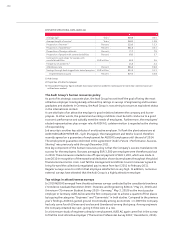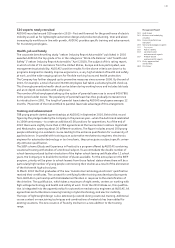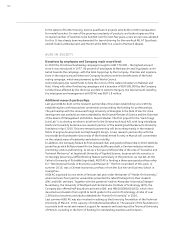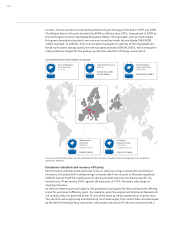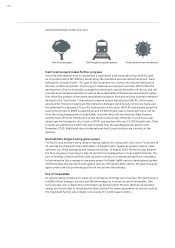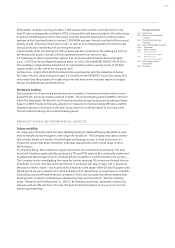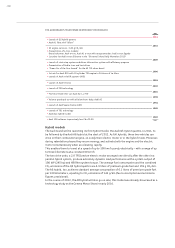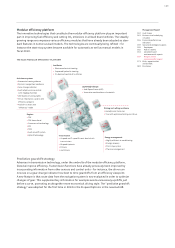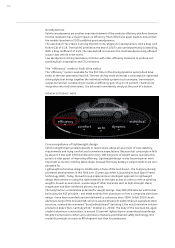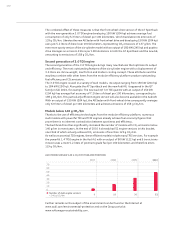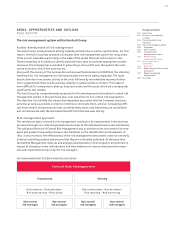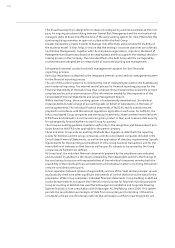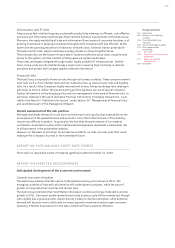Audi 2010 Annual Report Download - page 172
Download and view the complete annual report
Please find page 172 of the 2010 Audi annual report below. You can navigate through the pages in the report by either clicking on the pages listed below, or by using the keyword search tool below to find specific information within the annual report.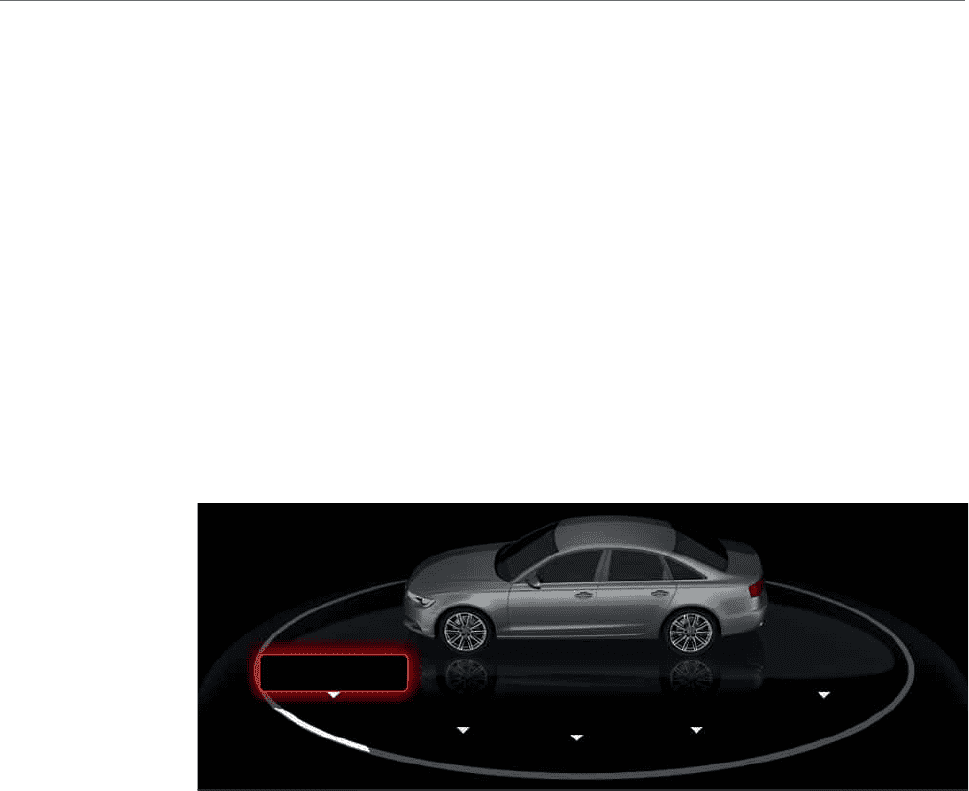
170
Aerodynamics
Vehicle aerodynamics are another important element of the modular efficiency platform because
tractive resistance has a major impact on efficiency. Much effort was again made to ensure that
the models launched in 2010 exhibited good aerodynamics:
The new Audi A7 Sportback is among the best in its category for aerodynamics, with a drag coef-
ficient (Cd) of 0.28. The Audi A6 unveiled at the end of 2010 is also aerodynamically outstanding.
With a drag coefficient of 0.26, the new Audi A8 is moreover the most aerodynamically efficient
luxury-class vehicle in the world.
Low aerodynamic driving resistance combines with other efficiency measures to produce out-
standing fuel consumption and CO₂ emissions.
The “efficiency” mode in Audi drive select
The “efficiency” mode is available for the first time in the driving dynamics system Audi drive
select in the new-generation Audi A6. The new driving mode promotes a consumption-optimized
driving style that brings together the individual vehicle systems such as engine, transmission,
suspension and air conditioning to realize an efficiency gain of up to 13 percent. Thanks to its
integration into Audi drive select, it is activated conveniently simply at the push of a button.
THE NEW “EFFICIENCY” MODE
efficiencyindividual
comfort auto dynamic
Core competence of lightweight design
Vehicle weights have spiraled upwards in recent years, above all as a result of new statutory
requirements and rising comfort and convenience expectations. Because fuel consumption falls
by about 0.3 liters per 100 kilometers for every 100 kilograms of weight saved, reversing this
spiral is a vital aspect of improving efficiency. Lightweight design is also becoming ever more
important as electric mobility takes shape, because the heavy battery’s weight needs to be com-
pensated for.
Lightweight automotive design is traditionally a forte of the Audi brand – the Company already
pioneered developments in this field over 15 years ago when it launched its Audi Space Frame
technology (ASF). Today, the Audi Group implements an intelligent approach to lightweight
design that centers on using the right materials at the right points in order to reverse spiraling
weights. As well as aluminum, a wide range of other materials such as high-strength steels,
magnesium and fiber-reinforced plastics are used.
The body harbors considerable potential for weight savings. Over 600,000 vehicles with bodies
built using the ASF principle – and made entirely from aluminum or from a composite aluminum
design – have been manufactured and delivered to customers since 1994. In fall 2010 the all-
aluminum body of the new Audi A8, which is around 40 percent lighter than an equivalent steel
structure, received the renowned “EuroCarBody Award” declaring it the most innovative volume-
production body (“Euro Car Body 2010,” October 21, 2010). The body of the new Audi A6, again
a hybrid aluminum construction, is around 15 percent lighter than a conventional steel design.
Despite its improved comfort and convenience features and enhanced safety technology, this
model thus weighs as much as 80 kilograms less than its predecessor.


